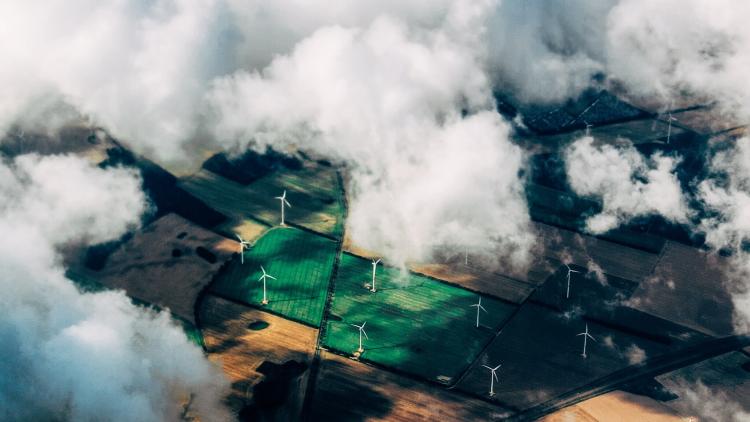Professor Richard Fardon

Key information
- Roles
- Department of Anthropology and Sociology Emeritus Professor
- Department
- Department of Anthropology and Sociology
- Qualifications
- BSc (Econ), PhD (London), FBA
- Email address
- rf@soas.ac.uk
Biography
I have been associated with SOAS for over thirty years: I joined as a lecturer from the University of St Andrews in 1988 and was promoted to a professorship in West African Anthropology in 1996, retiring as emeritus in September 2018. A year on, I returned as Interim Head of the Doctoral School in November 2019, reverting to emeritus status from September 2020. My various roles at SOAS included two terms as, what was then called, Chairman of the University of London Centre of African Studies (1993-97 & 2001-5), Head of the Department of Anthropology and Sociology (2003-5 jointly; 2006-10) and founding Head of the SOAS Doctoral School (2012-16, 2019-20).
Outside SOAS, I served as Chair of the Association of Social Anthropologists (2001-05) and as a Vice-President of the Royal Anthropological Institute (2006-9). Roles in Higher Education included membership of the RAE subject panels (for the 2001 and 2008 exercises), and membership of the Research and Higher Education Policy Committee of the British Academy (2006-12) and Chair of BA Section S3 (Anthropology and Geography) (2018-21).
Publication roles have included editor or co-editorship of AFRICA, the journal of the International African Institute (2001-7), and membership of the Publications Committees of the British Academy (2007-13) and of the Royal Anthropological Institute (2004-13).
I am current Chair of Trustees of the International African Institute (2016-) and a member of the Council of the Royal Anthropological Institute (2021-).
Research interests
My research has been focused on the ethnography and history of West Africa, and on contemporary anthropological theory seen in the light of its twentieth-century history.
My initial fieldwork, among Chamba living in Nigeria in the mid-1970s, was written up as a UCL doctorate in Anthropology (1980). Further research in Cameroon in the 1980s provided comparative ethnography that, along with archival materials, provided the substance of a pair of monographs: the first on Chamba politics and history, and the second on variations in religious practice (1988 Raiders and Refugees and 1990 Between God, the Dead, and the Wild). Around this time, I was particularly interested in ethnicity and processes of identification, about which I wrote theoretically and comparatively (some of these essays are among those collected in 2014, Tiger in an African Palace).
During the 1990s, my research concentrated on the twentieth-century history of British social anthropology: writing an intellectual biography of the anthropologist Mary Douglas (1999), who was one of my teachers at UCL, and, with Jeremy Adler, editing and introducing the selected writings of the Jewish Czech exile Franz Baermann Steiner, who was one of Douglas’s teachers at Oxford (1999). These interests continued: as her literary executor, I edited the final two volumes of Mary Douglas’s collected essays, published (2013) as A Very Personal Method and Cultures and Crises; and Jeremy Adler and I co-wrote a biography, Franz Baermann Steiner: a stranger in the world (2022). As well as occasional essays about Douglas and Steiner, I have also written on Robin Horton, V.W. Turner and my SOAS colleague, J.D.Y. Peel, several of whose posthumous works I edited as his literary executor.
My main focus returned to West Africa at the beginning of the twenty-first century, particularly to art history in a broad sense, again combining ethnography with archival and museum research. Two books appeared under the general title ‘Chamba Arts in Context’. The first, co-authored with Christine Stelzig [Kron], Column to Volume: Formal Innovation in Chamba Statuary (2005), set out to solve the conundrum of a stylistic departure in Chamba figure sculpture; the second, Fusions: Masquerades and Thought Style East of the Niger-Benue Confluence, West Africa (2007), extended an early interest in patterns of transformation between neighbouring societies in middle Nigeria and Cameroon, by looking at variations in the forms and conceptions of their masquerades.
This comparative interest in historic artworks was broadened regionally to collaborate on a major exhibition and catalogue, Central Nigeria Unmasked: Arts of the Benue River Valley (2011, with Marla Berns and Sidney Kasfir). This project had a particularly long gestation since it had been initiated before his death by Arnold Rubin in the 1980s. The exhibition opened at the Fowler Museum (UCLA), before travelling to the Smithsonian Museum in Washington, the Cantor Center at Stanford and the Musée du quai Branly in Paris where it closed in 2013. The catalogue won the 2014 Triennial Award for the best multi-authored book on African Arts from the Arts Council of the African Studies Association.
Around the same time, my visits to German and Swiss archives added a historical dimension to my field experience of a ceremony that spread and mutated with the Chamba migrants who eventually reached the Grassfields of Cameroon during the nineteenth century (2006, Lela: History through Ceremony in Cameroon). Lela became a contemporary festival of regional significance the development of which, unusually, could be tracked for two centuries, including, from the early twentieth century, in photographic as well as written records.
This continuing interest in historical African arts has more recently led me to write about Mumuye figure sculptures (2020), and to co-author a book-length collaborative study (2021, with Tim Chappel and Klaus Piepel) on the arts, particularly in copper alloy, of the Verre of Nigeria. A spin-off from my necessary interest in the early German ethnography of this region was an essay on the Leo Frobenius and his expedition artist Carl Arriens written together with Richard Kuba (2021). A twentieth-century African creator is the subject of another collaborative book, Learning from the Curse (2017), conceived with the artist Sènga la Rouge, which explores the impact of the Senegalese novelist and film maker, Ousmane Sembene’s classic novel and film Xala. Although in part a result of coincidences, I see in retrospect that biographical works have figured largely in my career, including essays on the Tiv intellectual and author Akiga Sai (2015) and the Chamba Chief Garbosa II (2021).
In relation to anthropological theory, the Association of Social Anthropologists’ Handbook of Social Anthropology, of which I was managing editor, appeared in two hefty volumes with Sage in mid-2012, and encouraged me to return to theoretical concerns (for example, conferences published in 1985, 1990, 1995) that had been in abeyance while my work took an, at least on the surface of it, more substantive turn.
As is evident from this brief survey, I have enjoyed working with others across disciplines. In addition to the collaborators already cited, I have done so particularly often with the linguist Raymond Boyd (1992, 2041), whose research on Chamba language has been inspirational, and with the SOAS literary scholar Graham Furniss (1994, 2000), our most recent project involving an introduction to the translation of an extensive history of his own people written in Hausa by a Chamba Chief of the mid-twentieth century, Garbosa II, the Gara Donga (2021).
My current writing and researching will, I hope, progress towards a general account of historical colour interactions in African conception and practice.


